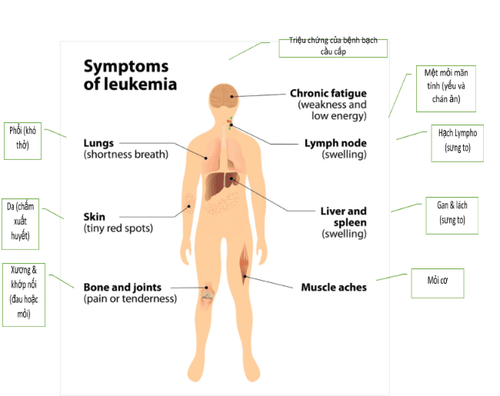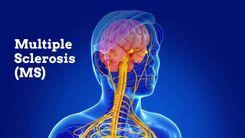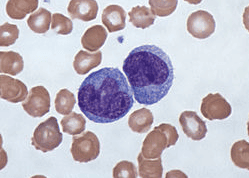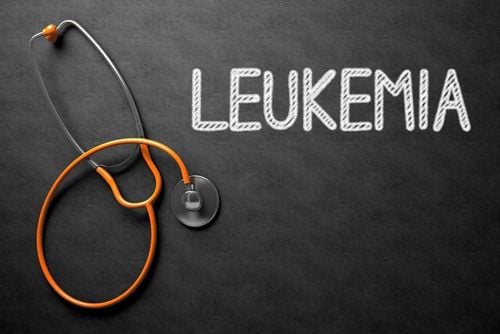This document was written by Dr. Yi Hyeon Gyu, who has been working at Unit of Hematology and Cell therapy, Vinmec Times City International Hospital.
Acute myeloid leukemia (also called AML) is a cancer of the blood and bone marrow cells. It affects a group of white blood cells called myeloid cells because they are formed in the bone marrow. "Acute" means that it develops and advances quickly, and requires immediate treatment.
1. What is acute myeloid leukemia?
Normally, myeloid and other blood cells are produced in the bone marrow (the spongy area in the middle of bones) in a carefully regulated fashion. In someone with AML, this process is abnormal. Large numbers of immature and abnormal myeloid cells (called myeloblasts, or just "blasts") are produced, fill the bone marrow space, and are released into the bloodstream. In their immature state, these cells cannot perform their usual functions.
2. What are the symptom and sign of acute myeloid leukemia?

The overgrowth of these cells leads to an inadequate number of normal, healthy blood cells, including white blood cells, red blood cells, and platelets. This can result in:
- Neutropenia (low numbers of neutrophils) – Neutrophils are a type of white blood cell that helps to fight infection. People with neutropenia are more likely to get infections. So the patient can experience symptoms of infection frequently such as fever, cough, or sputum.
- Anemia (low numbers of red blood cells) – Red blood cells circulate in the blood vessels and carry oxygen to our tissues. People without enough red cells may be pale and are often tired and short of breath.
- Thrombocytopenia (low numbers of platelets) – Platelets are small cells in the blood that help to prevent and stop bleeding. People with low platelets have bleeding and spontaneous bruising.
3. How can we treat acute myeloid leukemia?
A number of chemotherapy medications are effective against AML. The goal of treatment is to kill the malignant cells without damaging the residual normal bone marrow cells.
The genetic makeup of the abnormal myeloid cells can vary, which affects how you respond to treatment. Your treatment can be tailored based upon a careful analysis of your genetic material. They are generally not thought to be inherited but rather develop by chance.
Treatment of AML depends upon your specific subtype of AML. For example, people with a certain type of AML, called "acute promyelocytic leukemia," may be treated with other medications. Treatment also depends on your age and the presence of any other active medical problems.
The usual treatment of AML is divided into two phases: induction of remission and post-remission therapy.
INDUCTION OF REMISSION IN ACUTE MYELOID LEUKEMIA
The initial phase of treatment is referred to as remission induction or induction therapy. Induction therapy (with chemotherapy drugs) is given with the goal of decreasing the number of leukemia cells to an undetectable level and thereby restoring the production of normal blood cells.
Chemotherapy refers to the use of medicines to stop or slow the growth and longevity of cancer cells. Chemotherapy targets growing cells, interfering with their ability to divide or multiply. Because most of an adult's normal body cells are not actively growing, they are not as affected as much by chemotherapy as the cancer cells. However, the normal cells in the bone marrow (where the blood cells are produced), hair follicles, and the lining of the gastrointestinal tract are all growing. Effects of chemotherapy on these and other normal tissues cause side effects during treatment, including hair loss, nausea, anemia (lowered red blood cell count), an increased risk of infection (lowered white blood cell count), and bleeding (lowered platelet count).
Chemotherapy is given for several days and then neutropenia persists around 3 weeks. Induction therapy is almost always performed while you stay in the hospital because of the need for supportive care with IV antibiotics and frequent transfusions.
Complete remission — The first goal of AML treatment is to achieve a complete remission. Complete remission means that there is no visible evidence of leukemia cells in the blood or bone marrow, the bone marrow is functioning normally, and normal numbers of healthy blood cells have returned to the circulation. A bone marrow biopsy and blood testing are done to determine this.
POST-REMISSION THERAPY OF ACUTE MYELOID LEUKEMIA
Post-remission therapy is given with the intention of killing leukemia cells that may remain in the bone marrow or blood, but are undetectable under the microscope.
There are two basic treatment choices for post-remission therapy:
- Additional chemotherapy, sometimes called remission consolidation therapy
- Stem cell transplantation from a healthy donor (allogeneic stem cell transplantation)
The "best" post-remission treatment depends upon several factors, including how aggressive or resistant to treatment the AML is. People with AML can be classified by risk based on genetic testing of their leukemia cells:
Stem cell transplantation is not recommended for all patients with AML. Serious, and sometimes even fatal, complications occur more commonly after donor stem cell transplantation than with chemotherapy. In certain groups of people, there is no clear benefit of stem cell transplantation over chemotherapy. However, transplantation may be appropriate in some people, such as those with more aggressive forms of AML, those who have had a relapse following a period of remission, and those who do not achieve complete remission after initial induction therapy.
ACUTE MYELOID LEUKEMIA TREATMENT IN OLDER PEOPLE
In general, people over 60 years of age do not respond as well to treatment for AML. This is related to the following factors:
- Difficult-to-treat (chemotherapy resistant) leukemia cells may be more common in older people. This means that the AML that occurs in older people tends to be more resistant to standard chemotherapy drugs.
- In older people, the presence of other disorders, such as diabetes, kidney, lung, or heart disease, increases the risk of treatment-related complications.
Treatment decisions for older people with AML are best made on a case-by-case basis. Less intensive chemotherapy regimens are under development for older. If the potential risk of chemotherapy is greater than the potential benefit, supportive care may be recommended. Supportive care generally includes blood transfusions for anemia or bleeding and antibiotics as needed for infections.
Based on UptoDate










